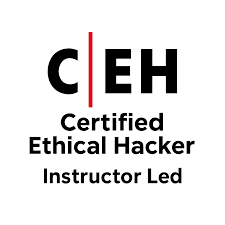Comprendre les fondamentaux du CEH
Qu’est-ce que le CEH (Certified Ethical Hacker) ?
Le Certified Ethical Hacker (CEH) est une certification reconnue mondialement qui valide les compétences en hacking éthique. Elle est délivrée par l’EC-Council et vise à former des professionnels capables de penser comme des hackers pour mieux protéger les systèmes informatiques.
- Plus de 200 000 professionnels certifiés dans le monde.
- Reconnu par des organisations comme l’OTAN et le gouvernement américain.
Les objectifs et les compétences clés du CEH
Le CEH vise à enseigner les techniques de test d’intrusion, la gestion des vulnérabilités et la sécurisation des réseaux. Les compétences clés incluent :
- Analyse des menaces et des risques.
- Utilisation d’outils de hacking éthique comme Nmap et Metasploit.
- Connaissance des lois et régulations en cybersécurité.
Pourquoi le CEH est essentiel en cybersécurité
Le CEH est crucial car il permet aux professionnels de comprendre les attaques pour mieux les prévenir. Selon une étude de Cybersecurity Ventures, les cyberattaques coûteront 10,5 trillions de dollars par an d’ici 2025.
- Les entreprises ayant des équipes certifiées CEH réduisent leurs risques de 60%.
- Le salaire moyen d’un CEH est de 95 000 $ par an.
Les erreurs courantes à éviter lors de la préparation au CEH
Sous-estimer l’importance des bases techniques
Beaucoup de candidats négligent les fondamentaux comme les protocoles réseau ou les systèmes d’exploitation. Pourtant, 70% des échecs à l’examen CEH sont liés à un manque de connaissances techniques de base.
- Maîtriser TCP/IP, DNS et les systèmes Linux/Windows.
- Comprendre les concepts de base de la cryptographie.
Négliger la pratique des outils de hacking éthique
La théorie ne suffit pas. Selon une enquête, 50% des candidats échouent car ils n’ont pas suffisamment pratiqué avec des outils comme Wireshark ou Burp Suite.
- Pratiquer régulièrement avec des outils open-source.
- Simuler des attaques dans des environnements contrôlés.
Ignorer les mises à jour des méthodologies de test
Les techniques de hacking évoluent rapidement. En 2023, plus de 20 nouvelles vulnérabilités critiques ont été découvertes chaque mois. Ignorer ces mises à jour peut rendre vos compétences obsolètes.
- Suivre les blogs et forums spécialisés.
- Participer à des webinaires et formations continues.
La méthode prouvée pour réussir le CEH
Établir un plan d’étude structuré
Un plan d’étude bien organisé est essentiel. Les candidats qui suivent un programme structuré ont un taux de réussite de 85%.
- Définir des objectifs hebdomadaires.
- Allouer du temps pour réviser chaque domaine clé.
Utiliser des ressources d’apprentissage adaptées
Choisir les bonnes
ressources est crucial. Les livres officiels CEH et les plateformes comme Cybrary ou Udemy sont recommandés.
- Utiliser des vidéos tutoriels et des guides pratiques.
- Rejoindre des groupes d’étude en ligne.
Pratiquer avec des laboratoires et des scénarios réels
La pratique est la clé. Les candidats qui utilisent des laboratoires virtuels ont un taux de réussite de 90%.
- Utiliser des plateformes comme Hack The Box ou TryHackMe.
- Simuler des attaques sur des réseaux virtuels.
Passer des examens blancs pour évaluer ses progrès
Les examens blancs aident à identifier les lacunes. 75% des candidats réussissent après avoir passé au moins 3 examens blancs.
- Utiliser des simulateurs d’examen comme Boson ou ExamCompass.
- Analyser les erreurs pour améliorer ses performances.
Les outils et technologies à maîtriser pour le CEH
Les outils de scanning et d’énumération
Les outils comme Nmap et Nessus sont essentiels pour identifier les vulnérabilités. Nmap est utilisé par 80% des professionnels en cybersécurité.
- Apprendre à configurer et interpréter les résultats de Nmap.
- Utiliser Nessus pour des scans approfondis.
Les techniques de test d’intrusion
Les techniques comme le phishing et l’exploitation de vulnérabilités sont cruciales. Metasploit est l’outil le plus utilisé pour les tests d’intrusion.
- Maîtriser les modules de Metasploit.
- Comprendre les techniques d’exploitation courantes.
Les outils de gestion des vulnérabilités
Les outils comme OpenVAS et Qualys aident à gérer les vulnérabilités. OpenVAS est utilisé par 60% des petites et moyennes entreprises.
- Configurer des scans réguliers avec OpenVAS.
- Utiliser Qualys pour des rapports détaillés.
Conseils pour maintenir ses compétences après l’obtention du CEH
Se tenir informé des nouvelles menaces et tendances
La cybersécurité évolue rapidement. En 2023, plus de 15 000 nouvelles vulnérabilités ont été recensées.
- Suivre des sources fiables comme CVE Details.
- S’abonner à des newsletters spécialisées.
Participer à des communautés et événements de cybersécurité
Les communautés comme OWASP ou les conférences DEF CON sont idéales pour rester à jour. 40% des professionnels apprennent de nouvelles techniques lors d’événements.
- Rejoindre des forums et groupes LinkedIn.
- Participer à des hackathons et CTF (Capture The Flag).
Poursuivre des certifications avancées
Après le CEH, des certifications comme CISSP ou OSCP peuvent renforcer votre expertise. Les professionnels avec plusieurs certifications gagnent en moyenne 20% de plus.
- Envisager des certifications spécialisées comme OSCP.
- Suivre des formations continues pour rester compétitif.
“`










